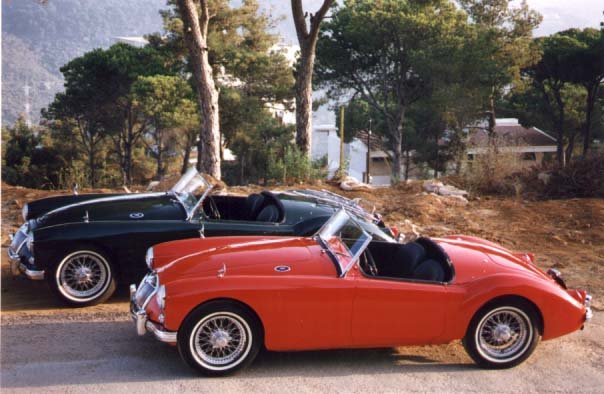1950 HEALEY SILVERSTONE
Engine: B3709
Although everyone now remembers Donald Healey for the famous Austin-Healey sports cars that bear his name, his reputation was secure well before then. Triumph’s technical chief in the 1930s, he established his own sports car business immediately after the Second World War, and a whole family of sports saloons, drop-head coupés and two-seaters evolved around the same chassis. The Silverstone, of which only 105 cars were ever made, was the sportiest of all.
The chassis was a simple, but rigid, box-section design, with a 102 in (2591 mm) wheelbase, which featured trailing-arm/coil spring independent front suspension. Although originally intended to use Triumph running gear, (Healey tried to sell the rights to his one-time employer), it was finally powered by the impressive twin high-camshaft Riley 2.5-litre engine, whose 104 bhp output was among the highest of all early post-war British cars. Backed by a Riley gearbox and rear axle, this was a formidable base on which to build various body styles.
Original cars, previewed in 1946, were two-door four-seater machines called Westland (an open roadster) and Elliot (a saloon), but although both could reach 100 mph, they were really too heavy to be competitive in motorsport. The two-seater Silverstone, which was announced in 1949, changed all that.
Using the same chassis, the Silverstone was fitted with a stark and very basically equipped open-top aluminium body shell in a traditional two-seater style.
With separate front wings closely cowling the front wheels, the headlamps were hidden away behind a narrow radiator grille – where they can have done little to improve the airflow through the radiator! The Silverstone was 450 to 500 lb (204 to 227 kg) lighter than the four-seater types, and the trade-off for minimal accommodation was much faster acceleration, and better road holding. One of the entertaining quirks of this car was that the spare wheel was mounted horizontally, and semi-externally in the tail, where it acted as a bumper. There was no front bumper.
Functionally, this was a purposeful machine, the only marketing problem being that it was hand built and, by definition, expensive. Unhappily, some potential customers wanted a fast car as an alternative to, say, the Jaguar XK120, but were frightened off the Silverstone because it was such an individual machine. It might have been effective, but as there was virtually nowhere to stow any luggage, here was a single-purpose car, made with motorsport in mind.
Made of aluminium and hand built, these were expensive cars for their day. Survivors of the original 105 produced are very rare and desirable.
D25 was purchased new and shipped direct to the United States by well-known American racer Briggs Cunningham where it was entered into the first motor race of the 1950 season, the SCCA Palm Beach American Sports Car Race held on January 3rd over a two-mile island circuit. D25 was raced by his 1950s Le Mans co-driver and two-time Sebring winner Phil Walters and after nearly two hours of hard racing the car came 1st in class and 5th overall. Briggs Cunningham sold the car to concentrate on developing his own V8 powered C2r Sports Racer that Walters would go on to race. D25 stayed in America, only briefly returning to Europe to compete in the 1990 Mille Miglia with its owner William Hinkle and co-driver David Nisbet.
Located in England........+44 (0) 207 589 8787
photo and text credit: Peter Bradfield Limited

